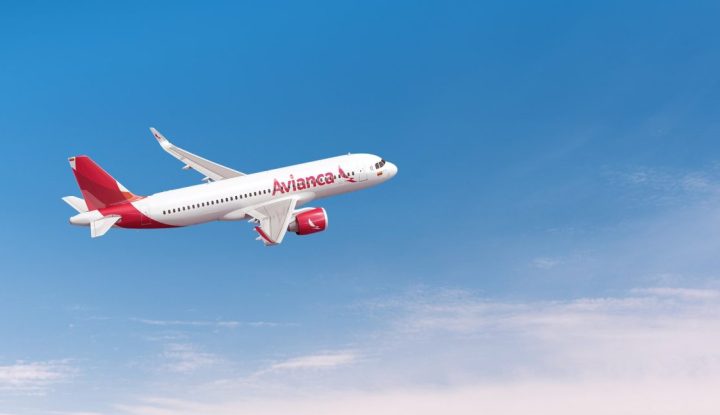The following interview was a featured segment in the NDC is NOW webinar hosted in December 2021.
 Kathy Morgan VP, Channel Delivery Sabre Travel Solutions
Kathy Morgan VP, Channel Delivery Sabre Travel Solutions Paul Tilstone, Managing Partner Festive Road
Paul Tilstone, Managing Partner Festive RoadKathy Morgan: NDC has been a hot topic in the travel industry for a while now. At Sabre, we talk about “going beyond NDC,” to indicate that we approach NDC as an enabler of our broader vision for personalized retailing. Now that the foundational “NDC pipes” are nearing completion and we are starting to hear more talk about airlines creating differentiated content using the offer and order model, where we are now in terms of NDC as a wider industry?
We’ve invited Paul Tilstone, managing partner of consultancy, Festive Road, to help us understand the landscape. Paul’s been involved with NDC since its inception and facilitates the IATA Travel Manager Advisory Group (TMAG), so has a great independent perspective. Welcome, Paul!
Paul Tilstone: Thanks Kathy — it’s really great to see the emphasis placed by Sabre and the wider aggregation community on NDC and the wider API landscape as we come out of this crisis.
I believe it holds the key for us to create a better, more integrated, and more service-oriented sector. And that’s particularly true for the business travel sector in which the Festive Road team operates.
KM: Great. NDC is a team sport that spans the travel value chain. What are you hearing from the various stakeholder groups?
PT: OK, let’s start with the buyers: the travel managers, procurement leads and category managers of corporate travel – because we should always look to the customer to guide our thinking right.
It’s best summed up by a call to action I heard loud and clear from Prashanth Kuchibhotla, Global Air Program Lead for McKinsey. He said at IATA’s conference a few weeks ago “Show me the value!” (And I’ve said that Jerry Maguire-style on purpose, as that’s how passionate he was about it). The buyers have been hearing about NDC for years. They’ve heard the rhetoric. They’ve seen the fees and they’ve started to see the content.
But, in the words of another buyer at a GBTA Convention a few years ago, “We don’t want old wine in new bottles.” The buyers want to see products and services that play to their travelers’ and corporations’ needs. It would be fair to say they aren’t seeing that yet. They want to see value-based products.
Diane Lundeen Smith, Global Travel Sourcing Manager from Microsoft — and US lead for TMAG — talks about the opportunity to use NDC to create products and services which play to a corporation’s needs across sustainability, health and wellbeing and accessibility. If corporate travel managers can start providing value-add services in these areas, they’ll encourage travelers to stay within the managed program and that’s super important for many of them right now – it demonstrates the value of managed travel and the role of travel management itself.
And this has never been more important as the spotlight still shines on the travel management function in organizations post-pandemic.
As for TMCs, we’ve already started to witness the rise of the “platform TMC”, a seamless link between human and technological servicing. Here’s where technology presents the opportunity for better servicing, and it’s clear that there’s an amazing opportunity for TMCs to invest and provide the services travelers need before, during, and after a trip. New content types based on API distribution play right to that need.
For airlines, who’ve been through as tough a time as the TMCs and tech providers, if not more, NDC creates an opportunity to build more innovative products and services and generate new revenue. Some airlines are clearly further along than others, we can all see that. But the potential of NDC hasn’t been in any way fully realized, yet – especially if we go back to that value need from corporates.
KM: Thanks, Paul. What I like about what you’re saying is that our work to ensure end-to-end functionality and scalability will support the type of value buyers want. What are you hearing from your clients about the recovery of travel demand?
PT: It’s clear there’s some pent-up leisure demand. To a certain extent, that’s true of business travel, as well, in the short term. But, uncertainty, government restrictions and the remaining impact of COVID-19 are still playing their part in depressing demand – and just look at how quickly things can change if we look at Austria. Belgium and now the African countries.
But the predominant driver of long-term demand is likely two things: sustainability and the Future of Work. Sustainability might drive less travel in the long term, (and we’re hearing this from companies, like Zurich insurance and EY), but as one buyer recently put it to me, “We might do half the trips, but I want the experience to be twice as good.” This suggests that the opportunity for NDC to bring that value to the shopping and trip experience stages is a real opportunity here and now. And the changing format of the workplace will undoubtedly bring new opportunities too and potentially new types of travel.
API-based distribution also offers huge potential for intermodality – that is a trip involving different forms of transport — and bundling, which relates to sustainability. For example, rail may be an alternative to air for some, while knowing what the most effective ground transport options are for getting to and from the airport would be useful to others.
KM: Yes, let’s not forget we’re not just talking about air here! That’s a great point. The potential to deliver a full travel service experience and generate incremental revenue is a great opportunity. It underscores the importance of taking an end-to-end view. Before we close, you attended the IATA Digital, Data, and Retailing Symposium [in October 2021]. What were the overriding themes you heard at that event for business travel?
PT: First, it’s clear that investments in NDC have continued during the pandemic. The pace seems to be accelerating. But, the travel buyers I interviewed on stage (MS & McKinsey) both said that they want to see more value being developed using NDC as I said at the beginning of our discussion. They don’t want to just see the same fares and ancillaries that they get through direct channels – they want tailored bundles and fare families that reflect their corporate needs and that travelers will value by staying within the managed channel.
The second big message I heard was that airlines will be highly focused on continuous and dynamic pricing this coming year. For the leisure sector, this isn’t so much of a challenge, as the offer is the offer. But, for the corporate travel sector, there’s a question of comparable value. How does the corporate travel manager know they are getting good offers compared to other corporations or other TMCs? How can they continue to demonstrate the value of a managed program?
This is an area where an aggregator, like Sabre, can really help in the future. With the volume of comparable transactions you, or even a TMC, processes you will be able to use the data from thousands—millions—of transactions to benchmark what value the corporate is receiving – and this is really important to travel managers. Again, it’s another advantage of scalability.
I think these were the two overriding themes I heard and they were also reflected in what I heard at GBTA Convention too when it comes to NDC and API.
KM: There’s plenty to think about there and a lot to work toward in 2022. Thanks for joining us today, Paul.


